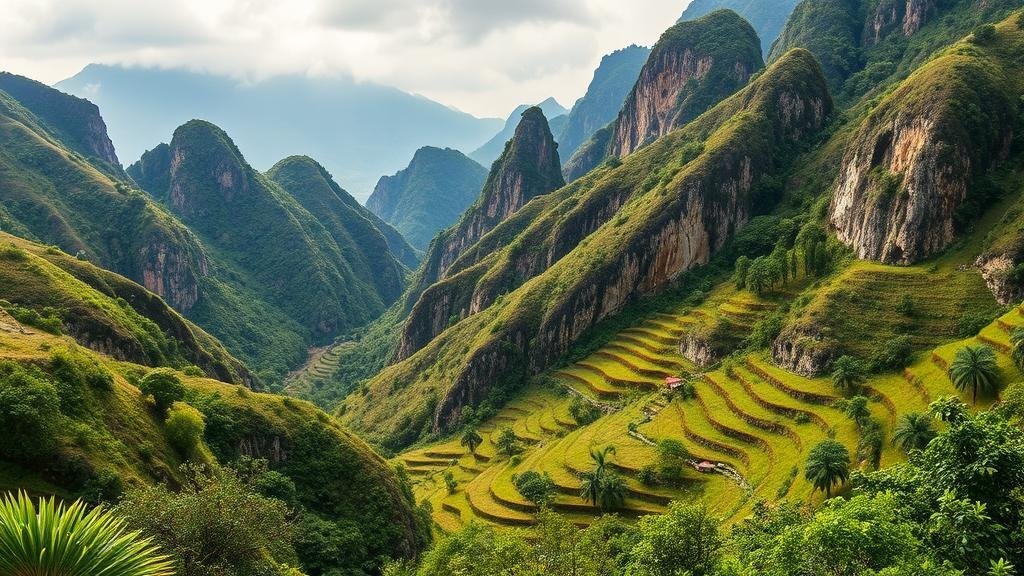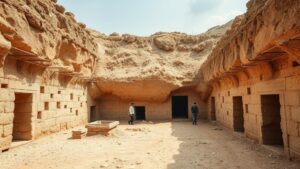Exploring the unexplored valleys of northern Vietnam for evidence of early Dong Son culture cities.
Exploring the Unexplored Valleys of Northern Vietnam for Evidence of Early Dong Son Culture Cities
Northern Vietnam, a region renowned for its breathtaking landscapes and rich cultural heritage, holds an archaeological treasure trove that dates back thousands of years. Among the earliest and most influential cultures of this region is the Dong Son culture, which thrived approximately from 1000 BCE to 100 CE. This article delves into the unexplored valleys of northern Vietnam, seeking evidence of ancient Dong Son cities and the profound impact they left on the area’s history.
The Dong Son Culture: A Brief Overview
The Dong Son culture is characterized by its distinct bronze metallurgy, sophisticated craftsmanship, and intricate social structures. Excavations of the Dong Son sites, most notably near the Red River Delta, have revealed impressive bronze drums, tools, and artifacts that illustrate the artistic and cultural advancements of this civilization. These artifacts are not just remnants of everyday life; they symbolize a vibrant society skilled in agriculture, trade, and war.
One of the key artifacts from this period is the Dong Son bronze drum, which features various motifs including scenes of daily life, mythological creatures, and ceremonial rituals. These drums are artistic masterpieces that demonstrate the advanced metalworking techniques of the time, indicating a society rich in resources and skilled craftsmen.
The Topography of Northern Vietnam
Northern Vietnam is characterized by its diverse geography, encompassing towering mountains, lush valleys, and fertile plains. regions around Sapa and the Lao Cai province are often overlooked, yet they present a promising landscape for archaeologists. The unique topography not only offers protection but may have also facilitated the establishment of settled agricultural communities. Exploring these unexplored valleys may yield significant insights into the urban planning and societal organization of early Dong Son cultures.
- Mountainous terrains provide natural barriers that could have encouraged the development of fortified cities.
- Lush river valleys may have supported early agricultural practices, influencing settlement patterns.
The Archaeological Significance of Unexplored Valleys
The unexplored valleys of northern Vietnam serve as a potential goldmine for archaeological discoveries. Recent studies in similar locales have demonstrated that hidden sites can yield a wealth of information related to early human settlements. For example, in the Phu Tho province, various digs have unearthed remnants of settlements that suggest the existence of complex communities similar to those of the Dong Son culture.
One notable site is the Benoit site in the northern highlands, where preliminary findings suggest the presence of a large settlement linked to the Dong Son culture. Dating back to approximately 800 BCE, this site includes items such as pottery, remnants of agricultural practices, and tools consistent with Dong Son artifacts.
Methodologies for Future Exploration
To effectively explore these unexplored valleys, archaeologists propose a multi-faceted approach that combines traditional excavation techniques with modern technology. This includes:
- Geophysical surveys: Using ground-penetrating radar (GPR) to detect anomalies beneath the surface that indicate human activity.
- Cultural resource management: Engaging local communities to act as guides and informants can lead to the discovery of new sites and artifacts.
- Interdisciplinary studies: Collaborating with environmental scientists to analyze soil and vegetation patterns for evidence of past agricultural systems.
Real-World Applications and Importance
Understanding the Dong Son culture can have significant implications for contemporary studies in anthropology, history, and even economics. For example, insights into the agricultural practices of these early cities can inform current efforts in sustainable farming and ancient trade routes could lead to revitalizing tourism in northern Vietnam.
Also, global interest in heritage preservation highlights the importance of these archaeological explorations. By uncovering and protecting these ancient sites, we preserve a critical part of human history that informs our understanding of cultural development.
Actionable Takeaways
As we embark on this journey to explore the unexplored valleys of northern Vietnam, several key actions can be taken:
- Support archaeological initiatives through donations or volunteering to help preserve sites.
- Promote awareness of Vietnam’s rich cultural heritage through community engagement and educational programs.
- Encourage collaborations between local authorities and international researchers to foster sustainable archaeological practices.
The exploration of the unexplored valleys of northern Vietnam is not merely an archaeological pursuit; it is a journey to reconnect with our shared human history. Through dedicated research, these valleys may reveal the intricate tapestry woven by the lives, cultures, and innovations of the early Dong Son civilization.



